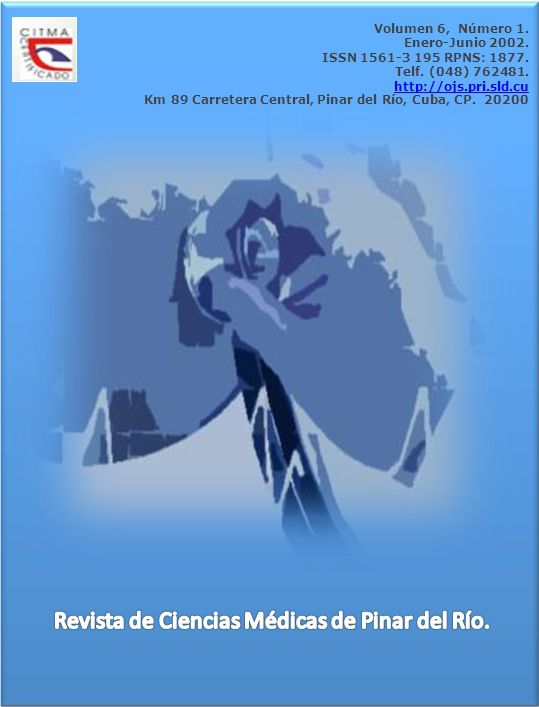Epidemiología y clínica de la enfermedad inflamatoria pélvica.
Keywords:
ABORTO/complicaciones, ANEXITIS/epidemiología, ENDOMETRITISAbstract
Con el objetivo de mejorar el diagnóstico y la conducta en las pacientes portadoras de una enfermedad inflamatoria pélvica aguda se realizó una investigación retrospectiva, longitudinal y analítica que envolvió a 103 pacientes ingresadas por esta enfermedad en el Hospital Docente Gineco - Obstétrico «Justo Legón Padilla» entre enero y junio de 1998. Las variables analizadas fueron: edad, antecedentes de importancia en los tres meses previos al ingreso, síntomas y signos, forma clínica, operación realizada y cifras de eritrosedimentación al ingreso y al egreso. El análisis estadístico se realizó a través del porciento, la media, la desviación estándar y el estadígrafo Z con nivel de significación de p < 0,05 (significativo) y p < 0,01 (muy significativo). Obtuvimos significación estadística en las pacientes que tuvieron un aborto previo tres meses antes del ingreso y que sus edades oscilaban entre 20 y 29 años, así como las que tenían antecedentes de colocación de DIU con edades comprendidas entre 30 y 39 años; la triada de dolor, fiebre y leucorrea se presentó en la mayoría de los pacientes, el dolor a la palpación del útero y el crecimiento de este fue el signo fundamental. La endometritis fue la forma clínica más frecuente, siendo significativa en el grupo de menos de 20 años. La revisión de cavidad fue el tratamiento quirúrgico más empleado. Los valores medios de eritrosedimentación al egreso disminuyeron en relación con el ingreso.
Downloads
How to Cite
Issue
Section
License
Authors who have publications with this journal agree to the following terms: Authors will retain their copyrights and grant the journal the right of first publication of their work, which will be publication of their work, which will be simultaneously subject to the Creative Commons Attribution License (CC-BY-NC 4.0) that allows third parties to share the work as long as its author and first publication in this journal are indicated.
Authors may adopt other non-exclusive license agreements for distribution of the published version of the work (e.g.: deposit it in an institutional telematic archive or publish it in a volume). Likewise, and according to the recommendations of the Medical Sciences Editorial (ECIMED), authors must declare in each article their contribution according to the CRediT taxonomy (contributor roles). This taxonomy includes 14 roles, which can be used to represent the tasks typically performed by contributors in scientific academic production. It should be consulted in monograph) whenever initial publication in this journal is indicated. Authors are allowed and encouraged to disseminate their work through the Internet (e.g., in institutional telematic archives or on their web page) before and during the submission process, which may produce interesting exchanges and increase citations of the published work. (See The effect of open access). https://casrai.org/credit/



